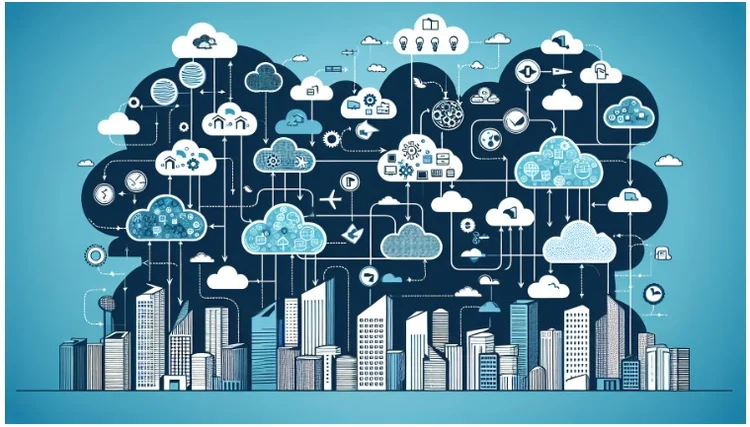
In today’s digital age, the backbone of the internet and cloud-based services lies within Data Centers. These essential hubs of computation and storage power play a pivotal role in handling the growing demands of businesses, governments, and consumers. From streaming videos to processing financial transactions, Compute Data Centers are at the heart of nearly every online interaction we perform. In this blog, we’ll dive into the world of Decoding Data Centers, breaking down their significance, how they function, and why they are indispensable to modern society.
What Are Data Centers?
At their core, Data Centers are specialized facilities designed to house computing and storage systems. They manage vast quantities of data for enterprises, handling everything from daily operations to strategic planning. The typical Compute Data Center is composed of servers, networking equipment, and storage systems, all connected through complex configurations designed to maximize efficiency and security.
Why Are Data Centers Important?
The sheer volume of data created every day requires robust infrastructure to manage, store, and compute it. This is where Data Centers come in, acting as the backbone of online services like social media, cloud computing, and even AI applications. The functionality of Compute Data Centers allows businesses to efficiently scale their operations, optimize processes, and ensure that data is available whenever it’s needed. Furthermore, data centers ensure business continuity by backing up critical information and providing redundancy in case of hardware or network failures.
The Functionality of Compute Data Centers
When it comes to Compute Data Centers, functionality is crucial. These centers are designed to process massive amounts of data quickly and efficiently. High-performance servers, large-scale storage arrays, and sophisticated networking systems work together seamlessly. Here’s a breakdown of the key functionalities:
- Storage Solutions: They store data on a massive scale, making it accessible for real-time applications and archival purposes.
- Data Processing: They handle computational workloads such as running business applications, analytics, and big data solutions.
- Networking: High-speed network connections ensure that data can flow rapidly between the servers and to external users or systems.
- Security Measures: From firewalls to encryption, data centers are fortified with several layers of security to protect sensitive information from cyber threats.
The Evolution of Data Centers
Over the years, Data Centers have evolved from traditional on-premises infrastructure to cloud-based services that enable more flexibility and scalability. Many companies now prefer using cloud-based Compute Data Centers, as they allow for global expansion without needing to manage physical infrastructure. Moreover, these cloud services help reduce operational costs, improve energy efficiency, and make disaster recovery more seamless.
Types of Decoding Data Centers Connectivity: Navigating Diversity
As the digital landscape continues to evolve, Data Centers remain at the heart of global connectivity and communication. However, it is not just their processing and storage capabilities that make them vital; their connectivity options play an equally crucial role. Decoding Data Centers requires understanding the various types of connectivity that ensure seamless data flow and optimal performance. In this blog, we’ll explore the different types of data center connectivity and how they impact the functionality of Compute Data Centers.
- Public Internet Connectivity One of the most common forms of connectivity in Compute Data Centers is public internet connectivity. This option uses the internet to connect data centers to external systems or users. While it’s affordable and easy to deploy, it often lacks the security, reliability, and low-latency characteristics required for critical applications. Decoding Data Centers using public internet connectivity reveals its suitability for smaller businesses and non-sensitive workloads, but not for those that require high-level security and performance.
- Private Network Connectivity Private network connectivity, such as Multiprotocol Label Switching (MPLS) or dedicated leased lines, offers a more secure and reliable alternative to public internet connections. This type of connectivity establishes a direct link between the Data Center and a business’s private network, ensuring that data remains isolated from public internet traffic. It is ideal for companies handling sensitive information, as private network connections offer lower latency and improved security features.
- Cloud Connectivity With the rise of cloud computing, Compute Data Centers increasingly rely on cloud connectivity solutions. These connections link on-premises infrastructure with public or private cloud environments, enabling businesses to leverage hybrid cloud solutions. Cloud connectivity is flexible, scalable, and allows seamless data transfers across different platforms. Decoding Data Centers that prioritize cloud connectivity reveals their focus on maximizing scalability and reducing hardware dependency.
- Inter-Data Center Connectivity Inter-data center connectivity allows Data Centers to connect with other data centers, either within the same organization or with third-party providers. This type of connectivity ensures that businesses can distribute their workloads across multiple locations, creating redundancy and improving disaster recovery capabilities. Typically, fiber-optic cables or high-speed connections facilitate this link, providing low-latency and high-bandwidth communication between geographically dispersed Compute Data Centers.
- Carrier-Neutral Connectivity Some Data Centers operate as carrier-neutral facilities, meaning they offer connections to multiple network providers. This approach gives customers the flexibility to choose the best service provider based on their specific needs. Carrier-neutral Data Centers provide businesses with greater options for reliability, cost-effectiveness, and redundancy, as they can switch between providers without affecting their operations.
- Content Delivery Networks (CDNs) Compute Data Centers that serve global content providers often rely on Content Delivery Networks (CDNs) to improve connectivity. CDNs distribute data across multiple data centers worldwide, ensuring that users access content from the closest possible location. This type of connectivity minimizes latency and enhances the user experience, particularly for streaming services, websites, and cloud-based applications.
Navigating Connectivity Diversity: Finding the Right Solution
Each business has unique needs when it comes to Data Center connectivity. Decoding Data Centers means understanding how to navigate this diversity to find the right solutions for your enterprise. Businesses dealing with high-security concerns may prioritize private network connectivity, while those embracing digital transformation and scalability may turn to cloud connectivity. The right combination of connectivity types can ensure a Compute Data Center runs at optimal performance, handling workloads efficiently, securely, and reliably.
In the era of digital transformation, Decoding Data Centers is critical for understanding how modern infrastructure operates and scales. Whether they’re traditional or cloud-based, Compute Data Centers have become essential for businesses and society alike, providing the computational power that drives innovation, sustains operations, and keeps data secure. As technology continues to evolve, the importance and functionality of Data Centers will only grow, making them an indispensable asset to the global digital economy.


